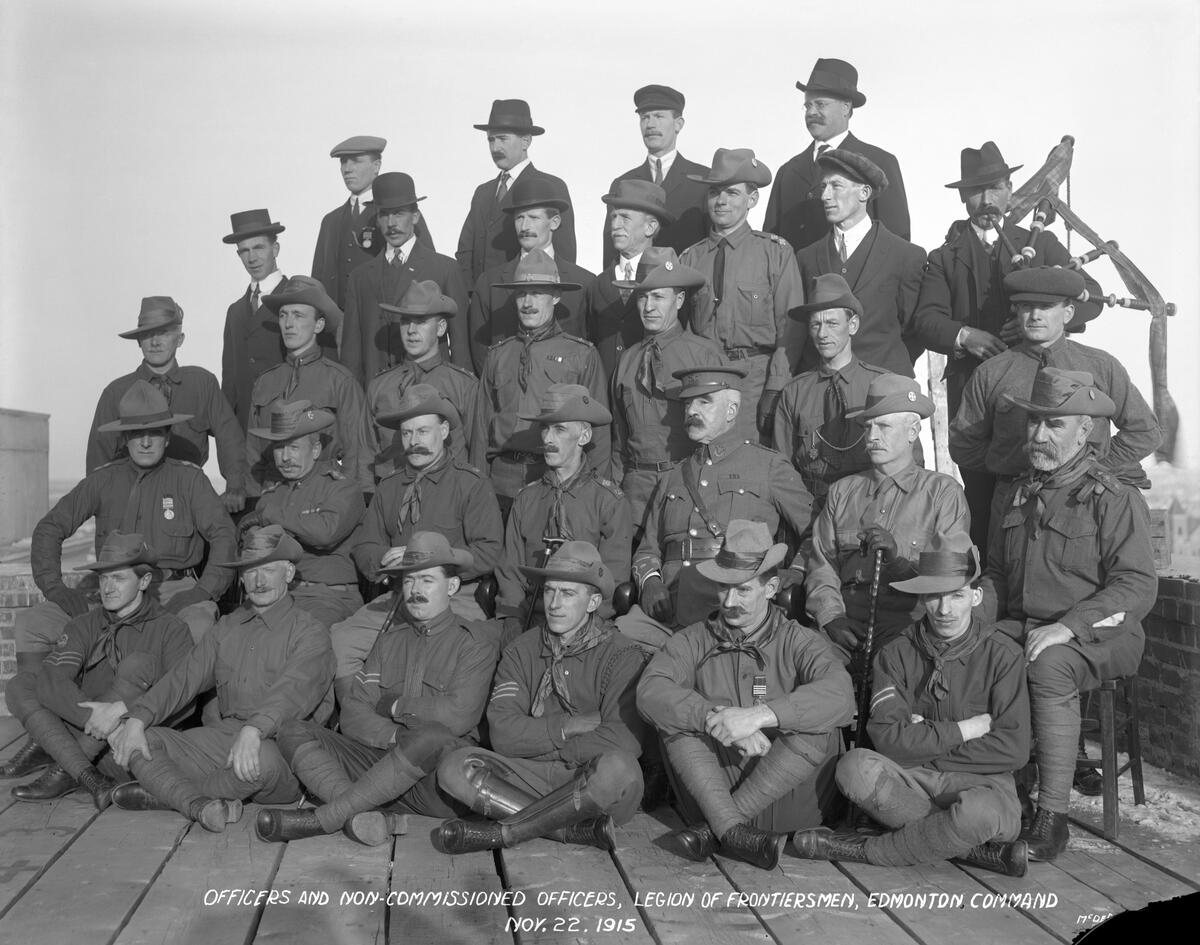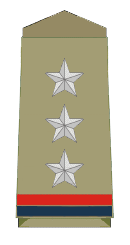|
Police Ranks In Canada
The police in Canada's ranks differ according to the different police forces and depend on different laws at the federal, provincial, and municipal levels. Royal Canadian Mounted Police The rank system of the RCMP is partly a result of their origin as a paramilitary force. Upon its founding on February 1, 1920, the RCMP adopted the rank insignia of the Canadian Army (which in turn came from the British Army), which is almost identical to that of the current Canadian Army. Like in the military, the RCMP also has a distinction between commissioned and non-commissioned officers. The non-commissioned ranks are mostly based on military ranks (apart from constable). Non-commissioned officer ranks above staff sergeant resemble those that formerly existed in the Canadian Army but have since been replaced by warrant officers. The commissioned officer ranks, by contrast, use a set of non-military titles that are often used in Commonwealth police services. The number of higher ranks, like ... [...More Info...] [...Related Items...] OR: [Wikipedia] [Google] [Baidu] |
Paramilitary
A paramilitary is an organization whose structure, tactics, training, subculture, and (often) function are similar to those of a professional military, but is not part of a country's official or legitimate armed forces. Paramilitary units carry out duties that a country's military or police forces are unable or unwilling to handle. Other organizations may be considered paramilitaries by structure alone, despite being unarmed or lacking a combat role. Overview Though a paramilitary is, by definition, not a military, it is usually equivalent to a light infantry force in terms of strength, firepower, and organizational structure. Paramilitaries use "military" equipment (such as long guns and armored personnel carriers; usually military surplus resources), skills (such as battlefield medicine and bomb disposal), and tactics (such as urban warfare and close-quarters combat) that are compatible with their purpose, often combining them with skills from other relevant fields such a ... [...More Info...] [...Related Items...] OR: [Wikipedia] [Google] [Baidu] |
RCMP Cadet Insignia
The Royal Canadian Mounted Police (RCMP; french: Gendarmerie royale du Canada; french: GRC, label=none), commonly known in English as the Mounties (and colloquially in French as ) is the federal and national police service of Canada. As police services are the constitutional responsibility of provinces and territories of Canada, the RCMP's primary responsibility is the enforcement of federal criminal law, and sworn members of the RCMP have jurisdiction as a peace officer in all provinces and territories of Canada.Royal Canadian Mounted Police Act', RSC 1985, c R-10, s 11.1. However, the service also provides police services under contract to eight of Canada's provinces (all except Ontario and Quebec), all three of Canada's territories, more than 150 municipalities, and 600 Indigenous communities. In addition to enforcing federal legislation and delivering local police services under contract, the RCMP is responsible for border integrity; overseeing Canadian peacekeeping missio ... [...More Info...] [...Related Items...] OR: [Wikipedia] [Google] [Baidu] |
Field Training Officer
A field training officer (FTO) is an experienced or senior member of an organization who is responsible for the training and evaluation of a junior or probationary level member. The role is used extensively in Law enforcement organisation, law enforcement, fire departments, and emergency medical services. Qualifications FTOs usually receive specialized classroom training and certification to meet state requirements (such as Police_officer_certification_and_licensure_in_the_United_States, POST, Texas Commission on Law Enforcement, TCLEOSE or emergency medical technician, EMT) before performing field training duties for the department they work for. Function A new trainee is usually only allowed to work with an FTO for a predetermined amount of time, or until the field training staff determines that they are ready to work on their own. Field training for police officers typically lasts 12 to 18 weeks, In some instances the trainee may work for a short amount of time prior to atte ... [...More Info...] [...Related Items...] OR: [Wikipedia] [Google] [Baidu] |
Sheriff
A sheriff is a government official, with varying duties, existing in some countries with historical ties to England where the office originated. There is an analogous, although independently developed, office in Iceland that is commonly translated to English as ''sherif''. Description Historically, a sheriff was a legal official with responsibility for a shire, the term being a contraction of " shire reeve" (Old English ). In British English, the political or legal office of a sheriff, term of office of a sheriff, or jurisdiction of a sheriff, is called a shrievalty in England and Wales, and a sheriffdom in Scotland. In modern times, the specific combination of legal, political and ceremonial duties of a sheriff varies greatly from country to country. * In England, Northern Ireland, or Wales, a sheriff (or high sheriff) is a ceremonial county or city official. * In Scotland, sheriffs are judges. * In the Republic of Ireland, in some counties and in the cities of Dubli ... [...More Info...] [...Related Items...] OR: [Wikipedia] [Google] [Baidu] |
Sergeant
Sergeant (abbreviated to Sgt. and capitalized when used as a named person's title) is a rank in many uniformed organizations, principally military and policing forces. The alternative spelling, ''serjeant'', is used in The Rifles and other units that draw their heritage from the British light infantry. Its origin is the Latin , 'one who serves', through the French term . The term ''sergeant'' refers to a non-commissioned officer placed above the rank of a corporal, and a police officer immediately below a lieutenant in the US, and below an inspector in the UK. In most armies, the rank of sergeant corresponds to command of a squad (or section). In Commonwealth armies, it is a more senior rank, corresponding roughly to a platoon second-in-command. In the United States Army, sergeant is a more junior rank corresponding to a squad- (12 person) or platoon- (36 person) leader. More senior non-commissioned ranks are often variations on sergeant, for example staff sergeant, gunn ... [...More Info...] [...Related Items...] OR: [Wikipedia] [Google] [Baidu] |
Sergeant Major
Sergeant major is a senior non-commissioned rank or appointment in many militaries around the world. History In 16th century Spain, the ("sergeant major") was a general officer. He commanded an army's infantry, and ranked about third in the army's command structure; he also acted as a sort of chief of staff to the army's commander. In the 17th century, sergeant majors appeared in individual regiments. These were field officers, third in command of their regiments (after their colonels and lieutenant colonels), with a role similar to the older, army-level sergeant majors (although obviously on a smaller scale). The older position became known as "sergeant major general" to distinguish it. Over time, the term ''sergeant'' was dropped from both titles, giving rise to the modern ranks of major and major general. The full title of sergeant major fell out of use until the latter part of the 18th century, when it began to be applied to the senior non-commissioned officer of an inf ... [...More Info...] [...Related Items...] OR: [Wikipedia] [Google] [Baidu] |
Inspector
Inspector, also police inspector or inspector of police, is a police rank. The rank or position varies in seniority depending on the organization that uses it. Australia In Australian police forces, the rank of inspector is generally the next senior rank from senior sergeant and is less senior than a superintendent (in the cases of the Queensland Police and Western Australia Police) in the other Australian police forces. Members holding the rank usually wear an epaulette featuring three silver pips, the same rank badge as a captain in the army. In addition to the general rank of inspector, some police forces use other ranks such as detective inspector and district inspector. Austria In Austria a similar scheme was used as in Germany. At some point the police inspector was completely removed from the list of service ranks. The current police service has an inspectors service track with ''Inspektor'' being the entry level – it is followed by ''Revierinspektor'' (precinct ... [...More Info...] [...Related Items...] OR: [Wikipedia] [Google] [Baidu] |






